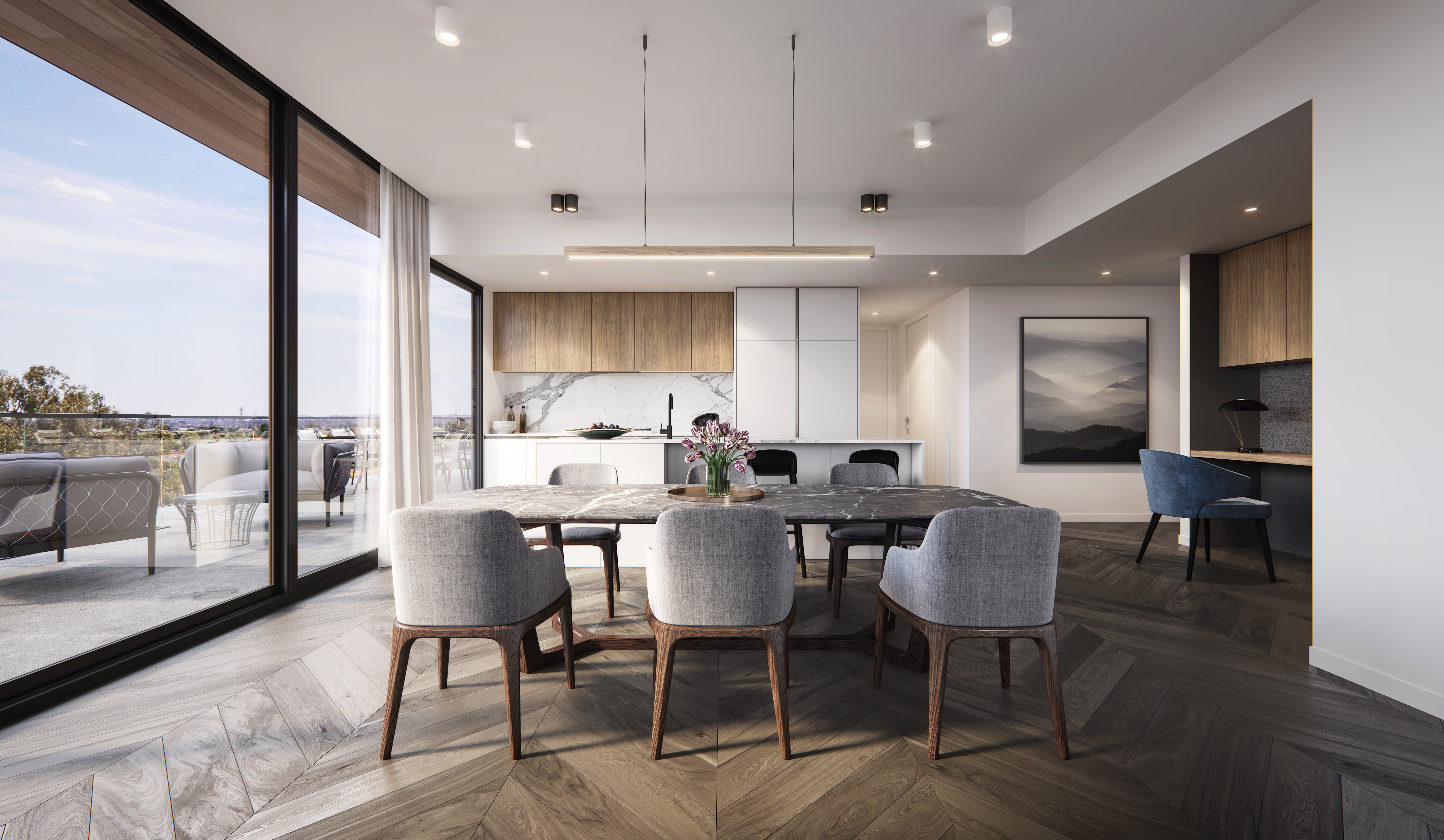14 Nov 2024
Design: Integrating Nature into Urban Living Spaces
If you’ve heard of the interior design trend of ‘bringing the outdoors in’, you will understand how important it’s become to integrate nature into our urban living spaces.
Across many of his 30 development projects, property developer Obaid Naqebullah says the attention to natural light, and outdoor living has been the foundation of their design principles.
“The Moor apartments designed by renowned architects Chandler Architects have perfectly integrated nature into these luxury apartments. A corner apartment on level 9 features a magnificent balcony with a north easterly aspect to draw in natural light and offer you sweeping views of The Dandenong Range mountains.”
Design that integrates nature into urban living doesn’t just respect the natural attractions of the location, it celebrates them. If there are views of mountains, parkland or waterfront in a living space, that adds a very special quality to a property. In fact, views can often add between 5 and 30 percent to a home’s value, even if it’s simply of a tree-lined street.
Urban living that incorporates al fresco space into its floor plan is highly appealing both for everyday relaxation and hosting guests.
“Generous balconies are the perfect place to enjoy food and drinks with family and friends. On warm days, take advantage of flexible sliding screens, and on balmy nights, adjust the outdoor lighting and linger in the loveliness of Melbourne’s summer,” says Obaid Naqebullah of the Moor Apartments.
Nature’s palette of soothing neutral colours, and warm earthy hues also help to define thoughtful urban design. When we’re choosing soft, calming colours and interesting textures that replicate nature, those details create a beautiful blueprint across our living spaces.
Maybe the curves of a benchtop or the cornices of a ceiling help conjure the movement of the shoreline. Perhaps the layers of comfort we weave into our beds, and our sofas – throw rugs, billowy cushions and warm blankets – nurture us like the folds of a bird’s nest?
Even the lines of a room can serve as a symbol of nature, replicating the undulations often found in the world’s natural forms like the ocean’s waves or the length of a tree.
Sally Delany, Manager Design Services, Victorian Health Building Authority says biophilic design is also about integrating nature into our buildings to enhance wellbeing. More than simply adding greenery to a room, biophilic design recognises that natural patterns, materials, sounds, smells and light can all contribute to feeling good.
Designers explain that incorporating nature into our living space has been shown to have a positive effect with scientific research demonstrating that it is psychologically and physiologically beneficial for human beings to regularly connect with the natural environment through light, air, water, plants, animals and natural landscapes like gardens, courtyards, skylights and atriums.
For the design of units and apartments, even small al fresco spaces like a balcony, or clever inclusions like big windows and skylights can draw the outside in and create mental stimulation for residents.
Ponds, fountains and aquariums can all help to mimic the natural environment and promote positive feng shui – the Asian design philosophy which recognises the flow of ‘chi’ energy in a home to promote wellbeing and good fortune.
“These delicate design details found in nature enable us to connect to the natural world in the urban living space – they can be strong architectural design features like a terrace, or a picture window overlooking a park, or they can be style accents that you can add yourself like soft furnishings, flowers, and artwork to turn a house into a home,” says Obaid Naqebullah.
